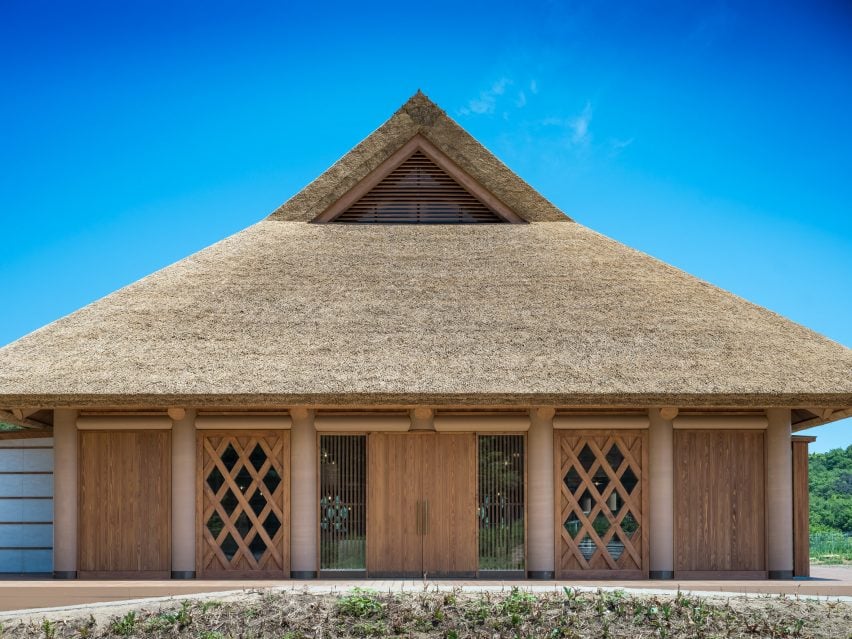Shigeru Ban uses thatch and cardboard at Farmer’s Restaurant in Japan
A thatched roof and large cardboard tubes form part of the structure of the Farmer’s Restaurant on Awaji Island, designed by Pritzker Architecture Prize-winning architect Shigeru Ban’s studio.
The restaurant sits in the middle of a field on the Japanese island, which is the same location as Shigeru Ban Architects‘ wooden Zenbo Seinei meditation retreat, completed earlier this year.
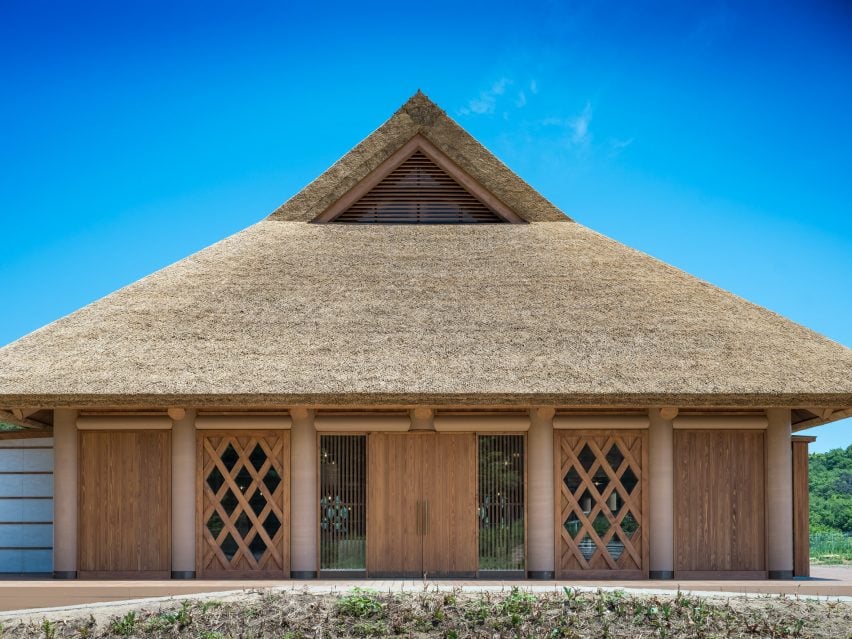
Farmer‘s Restaurant was commissioned by agricultural company Pasona Agri-Partners Inc to serve food made from fresh vegetables from the field. It is also used as a music hall.
Its architectural design pays homage to traditional Japanese farmhouses, most visibly in its large thatched roof.
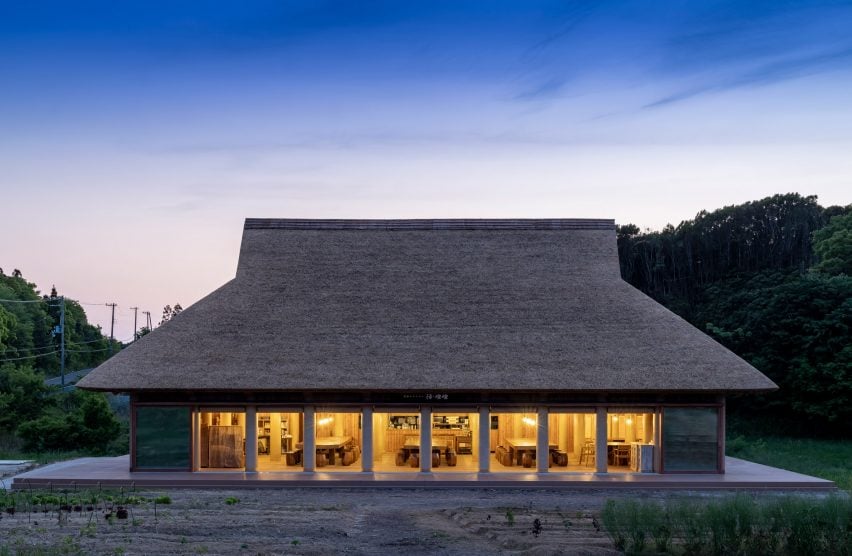
According to Ban’s studio, its chunky structural beams and columns also pay homage to the large trees that are used to create old farmhouses in Japan.
These structural elements are made from two pieces of Japanese cypress wood, wrapped in cardboard tubes.
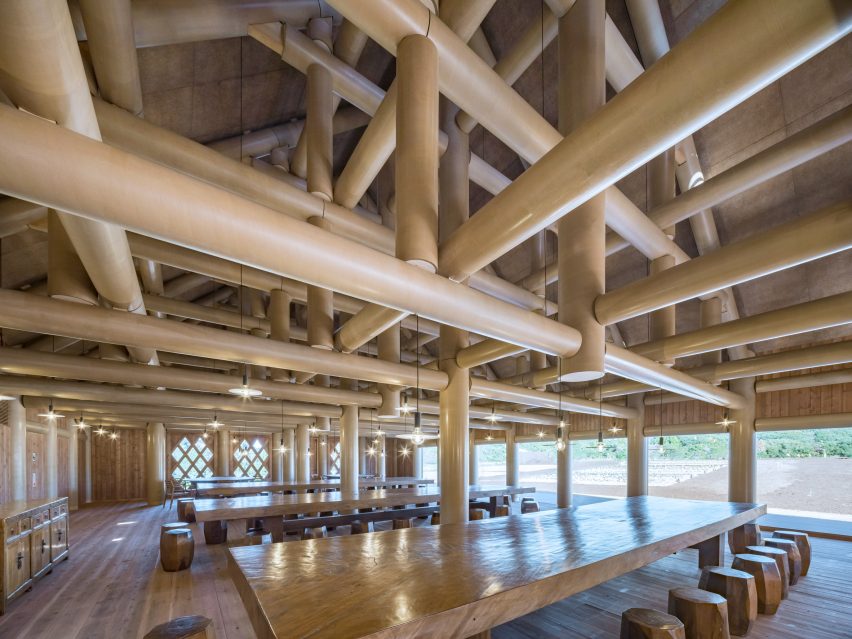
Farmer’s Restaurant is one of the largest-scale examples of Ban’s Paper Tube Structures system – his pioneering use of tubes made from cardboard as architectural and structural components.
Famously used across his works since 1990, the system can also be seen on projects including the Cardboard Cathedral in Christchurch, the Nomadic Museum in New York and the Paper House in Yamanakako Village.
Externally, the chunky columns sit between decorative wooden panels, doors and openings that lead out onto a decked area.
Inside, Farmer’s Restaurant’s exposed structure is complemented by wooden flooring, banquet tables, and stools.
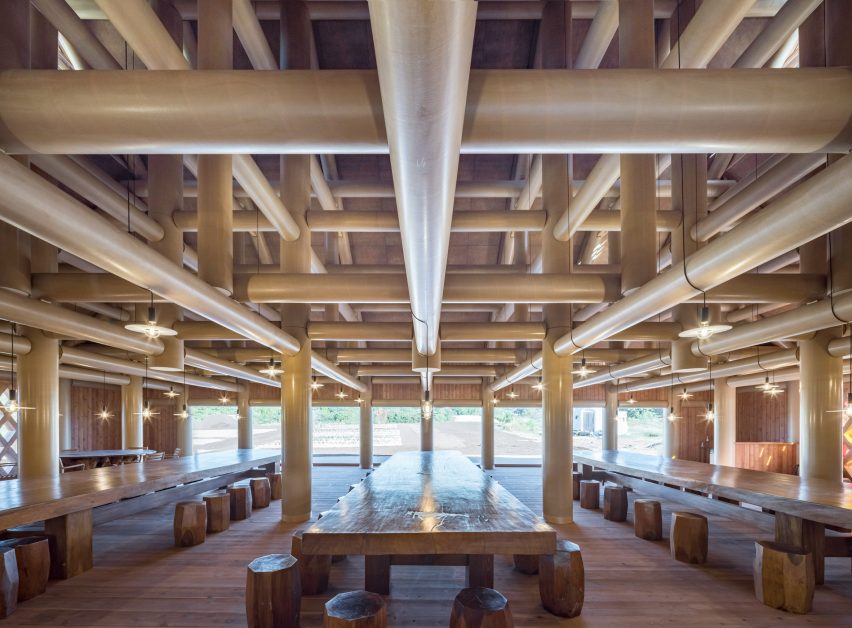
As some of the cardboard tubes are exposed to the outside, Ban’s studio has coated them in waterproof paint and designed them to be replaced over time.
Ban also famously uses cardboard as part of his modular Paper Partition System (PPS), which was developed to ensure the privacy of people seeking refuge in refugee centres.
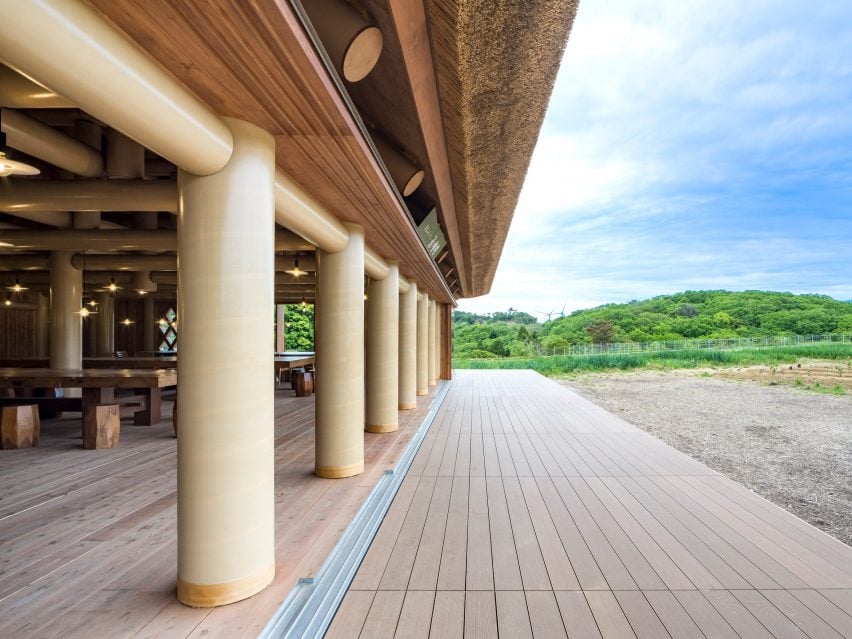
The PPS makes use of thin cardboard tubes as structure and textiles as partitions, with one unit taking just three people to build in five minutes.
Ban’s non-governmental organisation, the Voluntary Architects’ Network, recently used the system across Europe to help house Ukrainians fleeing the Russian invasion.
The photography is by Hiroyuki Hirai.
Project credits:
Architects: Shigeru Ban Architects
Client: Pasona Agri-partners Inc
Structural engineer: Hirokazu Toki, Shunya Takahashi
MEP engineer: Hokuryo Denko, Kukan Koubou, Fujii Scene2
General contractor: Kukunoya, Kusakanmuri

